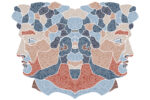Let’s think about what happens to scientific information after publication. How many readers have access to this information, and how much information do those who do have access retain? As a thought experiment, imagine you read a manuscript and 3 days later, you are required to either write down or speak out loud any useful insights or learning points. How would you fare?
Improving a reader’s understanding increases their return on investment, which introduces a positive feedback system that makes the individual feel satisfied because they have learnt and retained valuable knowledge. These individuals are more likely to engage actively with content in the future. Effective scientific communication ensures that information is easy to find, reaches a wider and relevant audience, and is readily shared by users creating network effects, converting readers into advocates. This encourages discussion among users, forming communities with feedback loops. Should authors start to think of their target audience as active users instead of passive readers? An active user would certainly be more likely to invest more attention and engage more fully in exchange for greater understanding and value from their experience.1
Long-established theories from the fields of education and cognitive science, coupled with modern digital tools, can be used to improve the retention of scientific communication. Cognitive psychologist Jerome Bruner has had a sizeable contribution in the field of education. As a proponent of the constructivist learning theory, he proposed that students in a classroom experienced tasks in three ways or representations:
- enactive (action-based): requires users to interact with content
- ‘iconic’ or pictorial (image-based): provides a visual representation of information
- ‘symbolic’ or abstract (language-based): uses text to communicate information.
Having worked in MedComms for over a year now, I have used abstract or language-based representations most often, occasionally used pictorial representations (thanks to the increasing requirement of graphical abstracts for manuscripts), and rarely used enactive representations.
Examples of how we can use enactive representations in academic publishing have been available for over a decade. A Nature article published in 1998 was redesigned by Bret Victor, an interface designer, using visual representations and animations.2 As a result, the reader (or user) no longer needed to construct complex systems described in the manuscript in their imagination by reading out the dense text – this was displayed for them in a stepwise fashion. Enabling users to toggle with the relationships between different variables, they were able to see implications of their actions and understand these complex networks with clarity.
It is interesting that while conversations about using enactive content for manuscripts (i.e. interactive figures) have not been scarce, I sadly never got the opportunity to develop interactive content for any of the manuscripts I worked on. In my personal experience, academic journals’ limitations in being able to host such content and associated costs have been major barriers, despite the growing push and enthusiasm to use interactive content from the clients’ side. Is it time for journals to develop solutions that enable interactive content to be hosted on their websites? Understanding the changing needs of our target audience and how they now wish to consume information in this era of smartphones and information overload is key to developing solutions and content that have maximum impact. Enabling increased use of enactive representations would not only increase the impact of information we wish to disseminate but also help convert passive readers to active users and users into advocates.
References
1.Jerardi K, Solan L, Deblasio D et al. Evaluating the impact of interactive and entertaining educational conferences. Perspect Med Educ 2013;2:349–55.
2. Watts D, Strogatz S. Collective dynamics of ‘small-world’ networks. Nature 1998;393:440–2.






